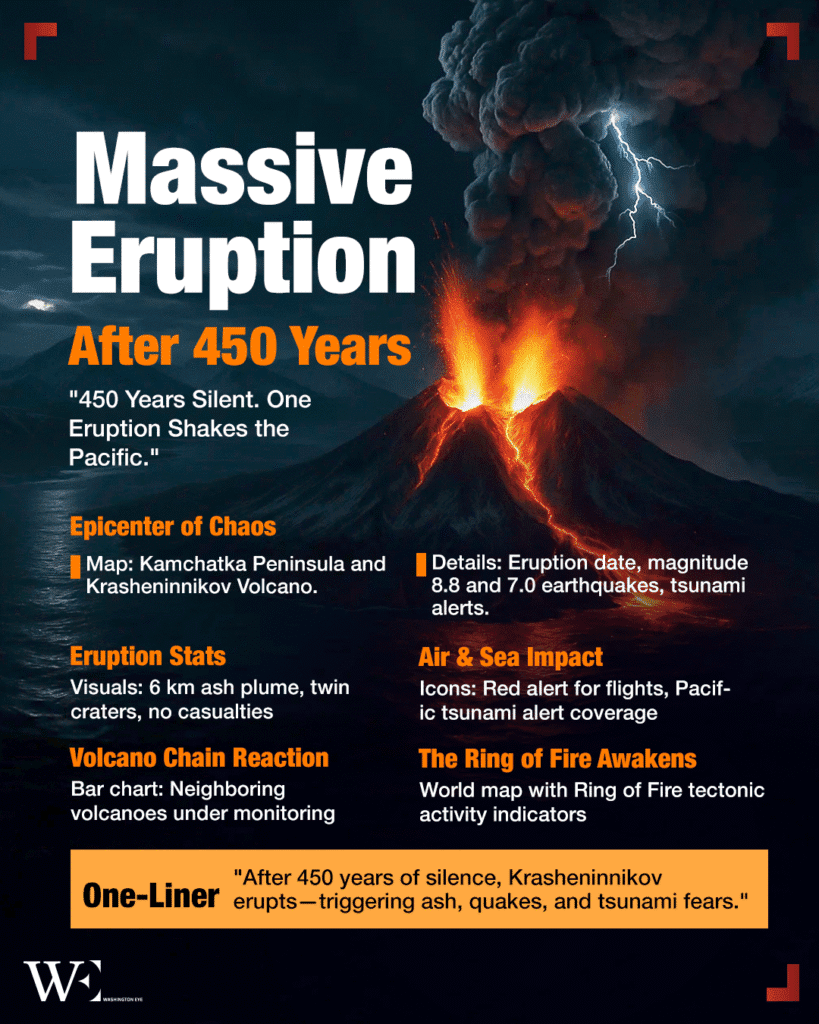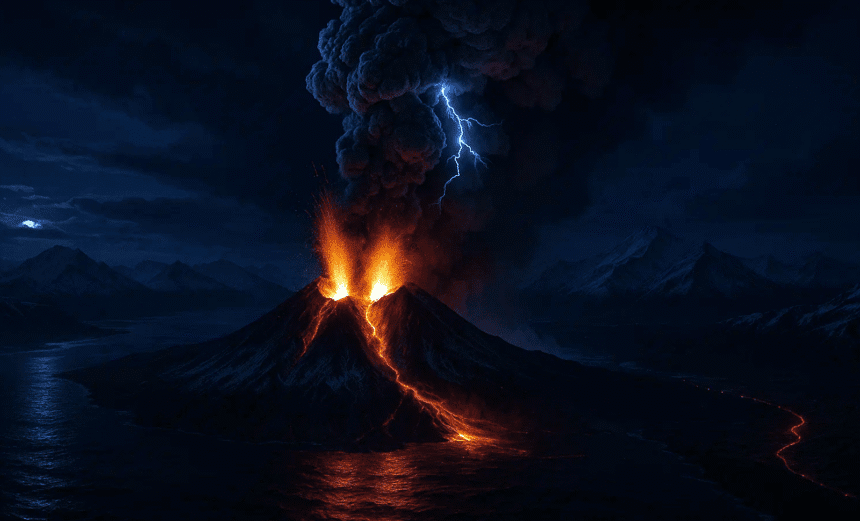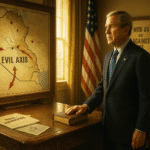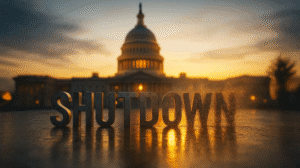In a dramatic geological event, the Krasheninnikov volcano on Russia’s remote Kamchatka Peninsula erupted on the night of August 3, 2025, after more than 450 years of dormancy. The eruption, which followed closely after a powerful magnitude 8.8 earthquake that struck the region on July 30, triggered a tsunami warning and raised concerns about renewed seismic and volcanic activity across the Pacific’s volatile “Ring of Fire.”
Located in the Kronotsky Nature Reserve, approximately 200 kilometers northeast of the city of Petropavlovsk-Kamchatsky, the Krasheninnikov volcano expelled a massive ash plume that rose nearly 6 kilometers into the sky. Though historical records are scarce, the Smithsonian Institution lists its last confirmed eruption in the year 1550, making this the first in nearly half a millennium. The spectacle was visible from a vast distance, with videos showing the fiery glow of lava and a thick column of ash erupting from the volcano’s twin craters.
Shortly after the eruption began, a separate 7.0-magnitude earthquake struck nearby, intensifying fears of further geological instability. Russian emergency authorities swiftly issued tsunami warnings for several coastal areas, although no major wave impact was recorded and the warnings were lifted a few hours later. The earlier 8.8 quake, among the most powerful in recent years, had already caused Pacific-wide tsunami alerts from Japan and Hawaii to Chile and California, where waves reaching nearly 2 meters were reported.
Despite the scale of the eruption, the immediate impact on human life has been limited due to the volcano’s remote location. The Kamchatka Peninsula is sparsely populated, and no casualties or property damage have been reported. However, the event prompted a temporary evacuation of scientists and staff working in the reserve, while aviation authorities issued red alerts for regional airspace due to the threat of ash cloud interference with flights. The Kamchatka Volcanic Eruption Response Team (KVERT) remains on high alert, monitoring activity not just from Krasheninnikov but also from other neighboring volcanoes like Klyuchevskoy and Mutnovsky, which have shown signs of increased unrest.
Experts believe the recent seismic activity may have played a role in reactivating the volcano. According to Dr. Olga Girina, head of KVERT, the violent earthquake that rocked the subduction zone off Kamchatka’s coast may have destabilized the magma chamber beneath Krasheninnikov. Though scientists are cautious to directly link earthquakes and volcanic eruptions, many agree that large tectonic shifts can disturb volcanic systems already under pressure , similar to shaking a soda bottle before opening it.
The eruption has significant implications beyond the region. Kamchatka sits at the intersection of several tectonic plates, making it one of the most seismically active areas in the world. With multiple volcanoes now showing heightened activity, volcanologists are closely watching for further eruptions that could impact both the environment and global air traffic. Already, the ash plume from Krasheninnikov is being monitored for its trajectory, which may spread eastward across the Pacific and affect long-haul flights.
While the immediate danger has passed, the event is a stark reminder of the unpredictability of Earth’s geological forces. The reawakening of Krasheninnikov after centuries of silence highlights the fragile balance beneath the planet’s surface, where seismic energy and volcanic pressure interact in ways still not fully understood. With the Pacific “Ring of Fire” now rumbling from Russia to South America, scientists are urging preparedness and increased monitoring to mitigate future risks.

















